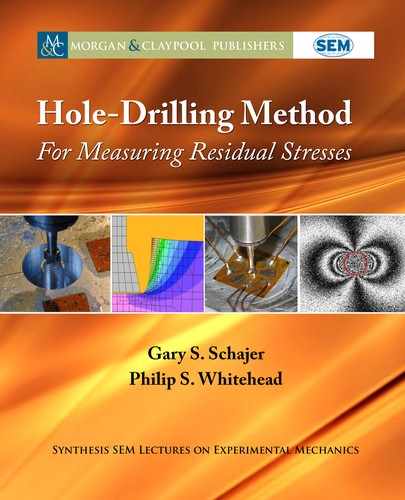
7.9. CONCLUDING REMARKS 163
200
0
-200
-400
-600
-800
-1000
200
0
-200
-400
-600
-800
-1000
Stress (MPa)
Stress (MPa)
Depth (mm)
0 0.1 0.2 0.3 0.4
Depth (mm)
0 0.1 0.2 0.3 0.4
x-stress
y-stress
x-stress
y-stress
(a) (b)
Figure 7.15: Hole-drilling ESPI measurements of residual stresses in a shot-peened material.
(a) Computed using initial image reference and (b) computed using previous image reference
(from Schajer and Rickert (2011)).
7.9 CONCLUDING REMARKS
Compared with the very well established strain gauge method, use of the various optical tech-
niques is still very much in its infancy. At present, most reported optical measurements are
research oriented; it is only recently that optical hole-drilling equipment suitable for routine
measurements has become commercially available. A crystal ball would indeed be an appropri-
ate device for predicting the future of optical measurement techniques. However, even in the
absence of such an accessory, there is still a good basis for anticipating a continued strong interest
in the development of optical techniques. eir rich full-field data certainly gives many fertile
opportunities. For example, it seems very likely that optical measurements will provide a pow-
erful tool to address the long-standing challenge of material plasticity when doing hole-drilling
measurements in materials with residual stresses close to yield point.
Right now and for the foreseeable future, strain gauges may be expected to remain the
standard choice for routine residual stress measurements. However, in an era when DIC capa-
bilities are freely available as an iPhone app, it may reasonably be anticipated that the optical
measurement techniques will grow to provide some serious competition.
..................Content has been hidden....................
You can't read the all page of ebook, please click here login for view all page.
